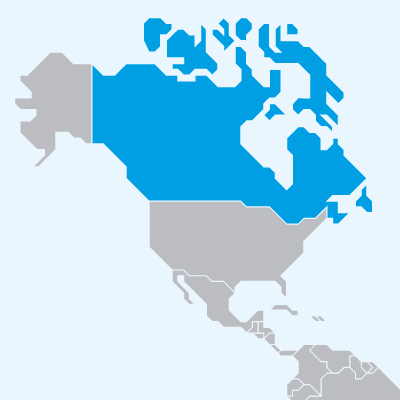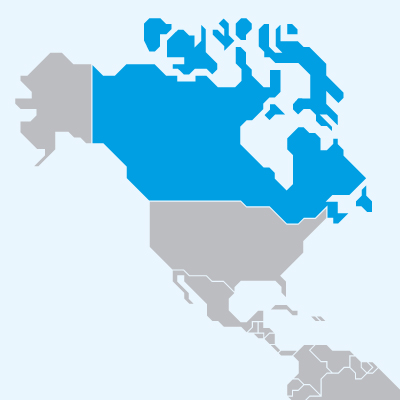Register to continue reading for free
Canada: Chapter 11 is a big issue for manufacturers

We spoke with Denis Falardeau, President of the Shoe Manufacturers’ Association of Canada to learn more about the current situation in the country driven by the COVID-19 pandemic. Companies filling Chapter 11 is a big issue at the moment, according to him
The Big Issue for the Industry
“As an association our main issue is regarding Chapter 11. Retailers received support from the Government to keep the jobs during the first wave. Now, many are filling Chapter 11. And that has a big impact on our members. Manufacturers who have outstanding invoices issued to a retailer who file Chapter 11 will lose roughly 70% of that amount! This situation is unbearable for the industry”, Denis Falardeau started explaining us.
The President of the Shoe Manufacturers’ Association of Canada is concerned with the impact this will have amongst its members, the footwear manufacturers. He wrote to the Ministry of Finance and asked the Government to look into this: “There is simply no guarantee for the shipments. At the moment, the manufacturer gets an order, produces shoes and ships them… at their own expenses and risk. They have no guarantee of receiving the payment.”
Chapter 11 – how it works?
Chapter 11 is a form of restructuring that involves a reorganization of a debtor’s business affairs, debts, and assets. Companies generally file Chapter 11 if they require time to restructure their debts. This version of bankruptcy gives the debtor a fresh start. However, the terms are subject to the debtor’s fulfilment of its obligations under the plan of reorganization. During a Chapter 11 proceeding, the court will help a business restructure its debts and obligations. In most cases the firm remains open and operating.
Online is here and will continue to grow. For Denis Falardeau, the big question is around trade fairs: “I’m curious to see how trade fairs will evolve! In my view, trade fairs should be online. Why would someone be on an airplane with a mask on for 12 or more hours to go on a trade fair, if we can make use of online showrooms, zoom, digital events?”.
The President of the Shoe Manufacturers’ Association of Canada is concerned with the impact this will have amongst its members, the footwear manufacturers. He wrote to the Ministry of Finance and asked the Government to look into this: “There is simply no guarantee for the shipments. At the moment, the manufacturer gets an order, produces shoes and ships them… at their own expenses and risk. They have no guarantee of receiving the payment.”
Chapter 11 – how it works?
Chapter 11 is a form of restructuring that involves a reorganization of a debtor’s business affairs, debts, and assets. Companies generally file Chapter 11 if they require time to restructure their debts. This version of bankruptcy gives the debtor a fresh start. However, the terms are subject to the debtor’s fulfilment of its obligations under the plan of reorganization. During a Chapter 11 proceeding, the court will help a business restructure its debts and obligations. In most cases the firm remains open and operating.
The Impact on Retail
Retailers took a huge hit with COVID-19. The high street was already living a difficult moment with the growth of ecommerce and with the change in consumer’s behaviours. The pandemic just added to the list of problems. Non-essential retail has been shut for some period of time during the first wave of the disease all over the globe. The same happened in Canada. The government assisted with 75% of the employee’s costs, which allow some retailers to survive. “When retail re-opened there were a lot of costs to make sure the stores was safe and clean. The business had to absorb the costs”, Denis underlined. Now, many of these retailers will not survive to another wave and another lockdown, especially as rents and leases account for a huge part of the costs: “Last November there was a forecast saying that by the end of January a thousand stores would be closed for good in Canada”.The Importance of Online
“Most of the members of the Association were already selling online, either to retailers or with their own brands”, Denis told us. We all know that the online was already a reality for many businesses and the pandemic just accelerated the process with the speeding up of the adaptation of online shopping routines for many consumers who were reluctant to give it a try before. The online business is a clear winner of the COVID-19 pandemic all over the world. In Canada the curb side is becoming popular for consumers, as they don’t have any contact with the staff of the store; they only need to open the trunk of the car and the products are put inside for them. But this raises issues for stores as well: if they don’t have a street door, they cannot do curb side.Online is here and will continue to grow. For Denis Falardeau, the big question is around trade fairs: “I’m curious to see how trade fairs will evolve! In my view, trade fairs should be online. Why would someone be on an airplane with a mask on for 12 or more hours to go on a trade fair, if we can make use of online showrooms, zoom, digital events?”.




